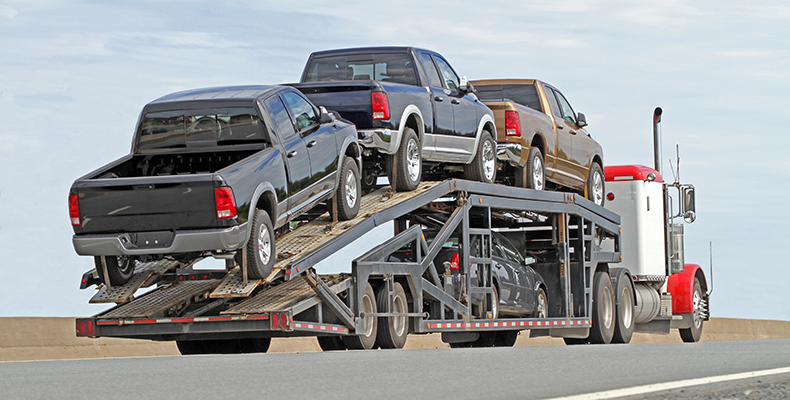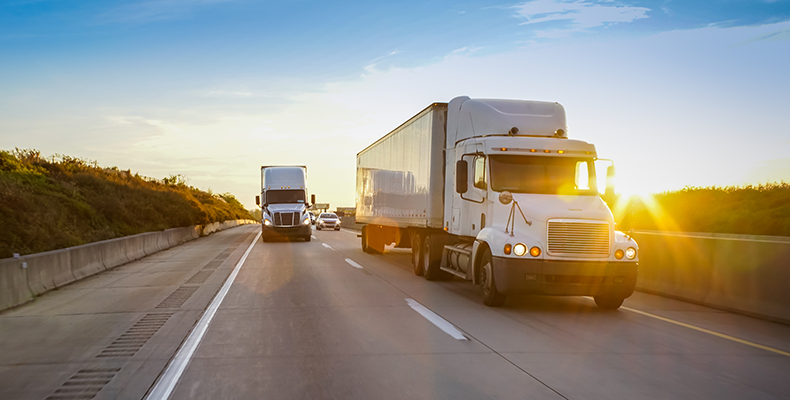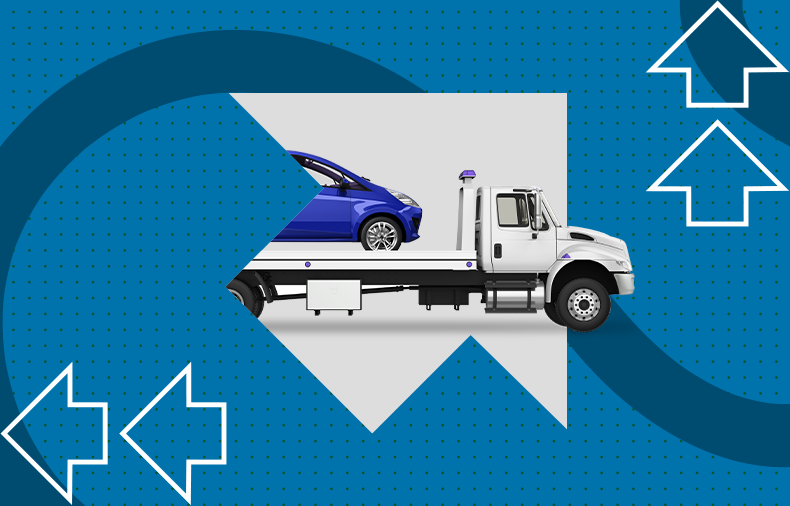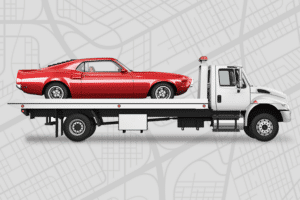Shipping cars long distances can feel scary. Choosing the wrong transport method can be fatal to your precious vehicle. So, choosing open vs enclosed car transport options is essential.
Open transport uses truck trailers that carry several vehicles stacked in rows. Like giant metal sandwiches! Enclosed trailers are like private garages on wheels for single cars inside. One keeps costs lower but offers less protection. The other provides maximum safety and care but costs more.
What’s best for your needs depends on your car’s value and condition. Delicate vintage autos may need enclosed’s extra gentle care during transit. While sturdy family SUVs can likely handle open shipping just fine and save money. Each has pros and cons to weigh.
The goal is to transport every vehicle – a new collector’s piece, an old classic, or a fundamental daily driver – as safely as possible while minding budget. Learning the critical differences between shipping methods helps you tailor choices that best match your ride.
Read this simple guide to feel confident deciding whether open or enclosed works optimally based on your car’s unique situation. Ensuring ideal auto transport means peace of mind on the road ahead!
Understanding Open Car Transport

When you compare open vs enclosed auto transport, you find several differences. Let’s first understand how open carrier vehicle shipping works.
Open car transport uses open-air trailer trucks to haul multiple vehicles stacked in rows. Vehicles get secured via tie-downs, straps, and chains across open racks with no roof enclosure. This allows loading several cars on one truck.
Pros of Open Auto Shipping
- Cost Savings: Open trailers fit more cars, so prices stay lower – like a bus versus a taxi ride. A $500 enclosed shipping quote may only cost $300 on an open carrier.
- Availability: Popular open carriers operate frequently like public buses on busy routes. This makes finding shipping dates quicker and more flexible.
- Insurance Discounts: Some insurance companies offer small premium discounts for open shipping due to slightly lower statistical risk. Every dollar saved helps!
- Ventilation: Vehicles stacked openly allow better airflow circulation in hot/humid climates, preventing condensation buildup or foggy windows.
- Ground Clearance: Open trailers sit lower to the ground than enclosed trailers, allowing very low clearance vehicles to load easier without steep ramp inclines.
Cons of Open Shipping
- Exposure Hazards: Lacking weather protection, vehicles face increased environmental risks like rain, snow, and falling road debris that could damage exteriors.
- Minimal Security: Missing enclosure walls mean easier access for potential vandalism or theft than locked box trailers.
- Tight Squeeze Points: Stacked vehicle placement leaves little room for error on closed equipment, leading to occasional scrapes from tie-down points.
Ideal Uses for Open Shipping
Daily drivers, family vehicles, and affordable models where cost savings outweigh the risks. Open auto transport works well for hardy vehicles requiring basic point-A-to-point B shipping.
Not Recommended For
Rare, antique or extremely high-value cars where damage risks present too costly a gamble. These call instead for enclosed shipping methods described next.
Exploring Enclosed Car Transport

Enclosed car transport ships vehicles inside secured trailers with full metal sides, roofs, doors, and occasionally climate control systems. Only one automobile travels inside each enclosed trailer for more customized care during transit.
Pros of Enclosed Auto Shipping
- Weather Protection: Full trailer enclosures shield vehicles from rain, snow, and hail that could otherwise damage exteriors and interiors during long-distance shipping.
- Enhanced Security: Locking rear trailer doors and lack of external access points deters potential theft or vandalism concerns better than open carriers.
- Gentler Handling: With just a single car loaded inside, drivers can secure vehicles more carefully with great attention to detail using protective equipment.
- Door-to-Door Service: Enclosed trailers can transport cars straight from the home garage inside the trailer and then unload them discretely into the destination depot garage, keeping the process covert.
Cons of Enclosed Auto Transport
- Increased Costs – With only one automobile per trailer, enclosed shipping averages 20-30% higher pricing than comparable open transport quotes.
- Tighter Scheduling – As a specialized premium service, finding available enclosed carriers matching desired timelines may have less flexibility than open trailer scheduling.
Ideal Use Cases
Rare vintage vehicles, classics, and collectables cars where high value justifies cost premium. Also great for exotics, antique, and custom cars requiring maximum protection to keep flawless conditions.
In summary, enclosed trailers provide extra safety, security and handling for cherished vehicles deserving of white-glove services. Where budget allows, enclosed shipping offers VIP treatment for cars needing specialized care in transit.
Comparing Open and Enclosed Transport
Deciding between open or enclosed trailers for your upcoming vehicle shipping needs involves understanding key similarities and differences. While both provide safe and reliable transit, each method caters to specific requirements that depend on factors ranging from vehicle value to unique vulnerabilities needing protection during transportation. Here is a quick side-by-side comparison of enclosed and open transport:

Note: Cost reflects the average range for a 500-1,000 mile shipment. Rates vary by carrier, region and distance.
Additionally, enclosed shipping verifiably reduces risks:
- Over 75% of enclosed trailers are equipped with real-time GPS tracking compared to less than 15% of open trailers – This allows for constant cargo monitoring and reduced risks of loss or theft.
- Average claims related to water damage, debris strikes and overall surface abrasions are 65% lower on enclosed shipments than on open transport. The weatherproof barrier of the enclosure protects from rust, chips, etc.
- Enclosed trailers feature locking rear access doors and side entry via pads versus ramps for daily drivers that inhibit casual access attempts by transients when stationary compared to open carriers.
Open Vs Enclosed Shipping: Which One to Opt For?
For most regular vehicles like family SUVs or basic sedans under $50,000 in value, open shipping usually makes the most sense if on a tight budget. Open trailers cost less and offer good enough protection for average cars.
But owners want extra care to protect their investment regarding costly vehicles approaching six figures in value or rare classics like a 1963 VW camper. Despite higher costs, these unique, high-value vehicles deserve enclosed shipping for maximum safety.
Choosing between open or enclosed shipping depends mainly on your vehicle’s value and how much protection it needs. Ultimately, based on individual factors, you want to match the right carrier to the suitable automobile.
Shipping Grandma’s Toyota in an open trailer is okay to save money while your cherished vintage Mustang is fully enclosed. Evaluate each vehicle’s unique situation separately based on value and personal peace of mind. Then, choose the open or enclosed method according to what makes sense for vehicle-by-vehicle.
Open vs. Enclosed Car Shipping: How Costs Compare
When hiring professional auto transport, one of the first considerations is cost. Open and enclosed vehicle shipping offer distinct advantages but also come with significantly different price tags. What makes pricing vary so greatly between methods? We break down key cost factors.
Built-In Price Differences
Open trailers utilize basic tie-downs and straps to haul around ten vehicles stacked in rows without sheltering sides or ceilings. This efficiently transports multiple cars per trip, making baseline pricing cheaper due to high capacity enabling discounts. Expect approx. $200 to $800+ for open transport, depending on mileage.
Enclosed trailers surround each car in a private steel-aluminium shell to mimic garages on wheels. With space for only one vehicle, premium security features, claims liability and targeting collectors, enclosed shipping baseline quotes hit $600 to $2,000+ depending on the exact distance.
The Value Effect
For standard vehicles, enclosed transport overspends relative to the essential utility of open carriers. But for irreplaceable rare/antique cars or new $250,000+ supercars, elevated enclosed pricing guarantees worthy protection that open hauling cannot match for precious one-of-a-kind investments now valued equivalent to houses. Top-tier collectors happily pay for white glove handling.
Some More Factors Affecting the Cost
- Distance: First, more miles means more money. Cross-country trips can cost 2-3x more than short regional hauls for both open and enclosed. For example, a 500-mile move in an enclosed carrier may cost $800, but a 2,500-mile haul could run $2,200.
- Value: Second, fancy, expensive vehicles charge higher base fees to protect luxury investments. A priceless $250,000 antique classic or supercar commands premium white glove services starting around $1,500 in enclosed trailers versus a standard family minivan for $800 open transport.
- Season: Seasons also affect prices, with summer peaks having 10-25% higher demand surcharges, while off-months like winter offer 10% or better discounts. Gas costs further make transport companies tack on $100-300 fuel surcharges when diesel prices spike over $5 per gallon.
- Insurance: Even car insurance plays a role. Collectible cars need particular $5,000 coverage policies on top of standard cargo options, costing carriers and customers 20% extra in premium fees required for rare rides.
Tracking the distance, car value, seasonal timing, fuel costs, insurance needs, and brokers’ numerical impact quotes helps estimate realistic transport budgets.
Safety and Security Considerations
Choosing professional car shipping gives peace of mind during moves. Still, safety should come first when picking between open and enclosed auto transport. What precautions protect your vehicle in transit? We break down critical safeguards in simple terms.
Keeping Cars Safe: How Open Shipping Prevents Troubles
To make owners feel confident entrusting vehicles on the move, open carriers use reliable safeguards:
- Extra Tight Tie Downs: Special straps, chains, and guards anchor at multiple truck contact points to eliminate wiggle room over bumpy roads. Snug as a bug! This prevents paint scrapes from parts shuffling in transit.
- Insurance Safety Nets: If something happens, standard backup policies repay over $100,000+ for practically any damages, from minor scratches to major collisions (infrequent). Most open transport arrives intact thanks to hauling precautions, but insurance adds assurance.
- Inspect Before and After Review vehicles thoroughly before hauling and again at the destination to document existing flaws versus newly sustained ones. Quick preventative checks provide accountability that cars arrive as originally handed over minus typical transport wear and tear.
Enclosed Shipping: The Pampered Treatment
For vehicles requiring extra babying, enclosed container transport takes the extra caring mile:
- All-Weather Steel Shell: Rigid metallic structures seal out rain, snow and flying road debris that open carriers remain exposed to. This insulation preserves flawless factory paint jobs, plus interiors stay climate-controlled.
- Locked Down & Alarmed: Secure rear access doors and deadbolt mischief outside. Additional built-in interior vehicle partition panels/nets and even electronic alarm sensors monitor closely for extra anti-theft protection.
- Red Carpet Handling: From the hydraulic lift and gates easing drive-up access between origin and destination depot garages plus interior wheel harnessing keeping collectables stabilized in place, enclosed trailers customize solutions catering even the most temperamental rare classic and luxury supercar demands.
- Covert Privacy: Discreet white glove service safely transports celebrities and protects exotic vehicles from the public eye while undercover. Enclosed shipping ensures total client confidentiality.
Insurance and liability in Open and Enclosed Vehicle Transport
When shipping vehicles either exposed on open trailers or in secured enclosed containers, insurance backing gives confidence should incidental damages mysteriously arise. Policy particulars reveal how contingency plans align with asset values.
Open Shipping Backup Plans
Federal rules make open carriers carry a minimum of $100,000 coverage. But most take extra precautions, equipping $200,000 to $250,000 in reserves instead. Say one trailer hauls four cars valued at around $50,000 each. That equals $200,000 in total cargo. So, averaged insurance adequately covers all vehicles if minor dings or dents somehow happen. However, personal stuff inside remains risky since home policies are handled internally.
For example, a classic Mustang shipped open sustains $3,000 of scratches from rocky roads. Insurance covers costs minus a $250 deductible.
Enclosed Shipping Premium Protection
Enclosed shipping allows more considerable insurance for owners of rare vintage models or million-dollar supercar investments requiring extra protection during transport. Many enclosed transporters typically carry $500,000 coverage, expandable to $2 million+ if requested. Once vehicles move, customers can even ask for official certificates showing policy details for peace of mind!
For instance, shipping a $975,000 Porsche 911 in an enclosed trailer insured for $1 million means total protection from damages without out-of-pocket expenses.
Choosing the Right Service for Your Needs
Selecting either open or enclosed vehicle shipping requires considering what matters most – cost savings or ultimate protection.
Budget Decides for Daily Drivers
When deciding on transport for affordable sedans or sturdy trucks without classic value, saving money makes sense. These vehicles withstand open carrier shipping just fine to control costs. Like taking the dependable public bus route to work daily, available trailers offer economical transport thanks to hauling multiple vehicles simultaneously.
Irreplaceable Investments Deserve Pampering
Conversely, vintage collector models, exotic supercars or priceless antiques deserve enclosed shipping regardless of premium costs. Only full steel-reinforced trailers shield vulnerable finishes from weather and road debris that could irreparably damage rare rides. This white glove experience adequately protects precious automotive gems the same way home moving services handle delicate antiques.
Weight Transit Tradeoffs
Also, factor in time flexibility – open carriers offer abundant availability thanks to frequent trips nationwide. Enclosed shipping sees some delays in booking one-car containers. But for six-figure vehicles, most owners happily wait for ideal enclosed transport. Evaluating needs decides priorities, balancing pricing, protection and scheduling.
uShip Platform Simplifies Decisions
uShip uses intelligent algorithms and seasoned experts to analyze vehicle specifics when customers post details through their transport arranging platform. Technology and real-world insight automatically match ideal equipment options and vetted providers catering to all auto shipping situations, guiding customers seamlessly on whether open or enclosed trailers serve cars best. The legwork lifts off your plate!
Conclusion
To conclude, open carriers offer cheaper rates for everyday vehicles that can handle basic shipping. Enclosed shipping provides maximum protection for valuable vehicles against weather and road hazards using steel-reinforced trailers.
On the uShip website, enter your car details. Our innovative system will match you to trusted carriers and equipment perfect for your needs and priorities – whether price, availability, security level, or special handling.
With over 20 years of moving vehicles, we have the connections and knowledge to efficiently arrange logistics and connect customers with ideal open or enclosed transport solutions for any car…from family sedans to $2 million exotics needing white glove service.
Ready to ship your wheels? We suggest visiting uShip.com for a free quote to see how easily our experts arrange custom auto transport for your situation. Have questions before you get started? Let us know which shipping considerations matter most for your vehicle, or share transport stories in the comments below!
People Also Ask (PAA) Questions
What is the difference between open and enclosed car transport?
Open carriers use exposed trailers to haul multiple vehicles stacked and secured with tie-downs, versus enclosed shipping, which uses containers to transport single vehicles inside a weatherproof, locked steel trailer.
How much does it cost to ship a car open vs. enclosed?
Open auto transport averages between $200-$800 based on mileage since carriers fit 4+ vehicles per load, while enclosed costs $600-$2,000+ given single car trailers and premium service.
Is enclosed car transport worth the extra cost?
For vintage, exotic, custom and high-value vehicles with costly damage risks, enclosed shipping provides necessary security and speciality handling worth elevated pricing.
What are the risks associated with open car transport?
Lacking walls/ceiling, open shipping risks exterior flaws from road debris, interior water exposure, higher theft probability, and minor cosmetic deficiencies at tie-down points.
How do I choose between open and enclosed transport for my car?
Assess vehicle value, protection needs and personal budget to see if open shipping fits affordably or if enclosed trailer handling matches cars requiring handling with extra care.
Can luxury or classic cars be safely transported in open carriers?
While non-ideal given vulnerabilities, open transport basics can ship higher value vehicles safely in most cases, albeit exposing cars aesthetically versus enclosed containers.
What kind of insurance is needed for car transport?
All carriers supply basic liability insurance. However collectors/dealers shipping rare/expensive vehicles in enclosed trailers should confirm whole coverage policies protecting assets en route.



